Signatories of the Banco de Guanajuato
Gerente
|
Joaquín Palau came from Veracruz. In August 1883 he became manager of the firm ““Sucesores de F. M. de Prida”El Siglo Diez y Nueve, 3 August 1883 which went into liquidation three years laterEl Tiempo, 18 August 1886. He was on the board of the Chamber of Commerce in 1886El Tiempo, 12 March 1886 and secretary for 1888La Voz de México, Tomo XVIII, Núm. 252, 9 November 1887 and in January 1893 was on the board of the Lonja Mercantil of VeracruzEl Siglo Diez y Nueve, 13 January 1893. On 17 February 1894 Palau was made general manager of the newly-formed firm of commission agents Jalon y Muñiz in Mexico CityEl Correo Espanol, 21 February 1894. He was the first manager and signed notes dated up to 14 October 1902. He resigned his post on 31 January 1903report of interventor Baz, 30 July 1903 (Memoria de la Instituciones de Crédito, correspondiente al año 1903). |
 |
|
However, Bustamante had been a naughty boy. He had accumulated a fortune and lived an ostentatiously luxurious life. In December 1913 because the revolutionaries were threatening his hacienda, called San Martín Villachauta, Bustamante purchased a machine gun, ammunition and other weapons. The police, thinking he was in some plot, searched his property and found, instead of evidence of sedition, papers belonging to the bank. Bustamante had made large, fictitious loans to accomplices, and also falsified the register of incinerations, keeping banknotes that had been recorded as destroyed. Bustamante and an accomplice, the employee Salvador Patiño, were arrested, and Patiño confessed that the books were falseEl Diario, Año VIII, Núm. 2068, 5 December 1913: El Barretero, Guanajuato, 5 December 1913. By 6 December it was reported that the swindle had risen to about three million pesos, including more than a million in notes that should have been destroyed. Apparently, they only counted the notes in two or three of the packets and weighed the rest so Bustamante was able to exchange the packets of notes (of the $5 and $10 denominations) for ones of mere paper. He then sent the notes to the Banco Central Mexicano or other institutions in Mexico City to be changed into notes of other banks or made deposits in other banks in Guanajuato, even though the banks were unwilling to accept the deposits because of their poor condition. Bustamante also had the keys to the two safes that should have been under the Interventor’s controlEl Diario, Año VIII, Núm. 2069, 6 December 1913. Bustamante continued to claim his innocence. On 4 February 1914 he appeared before the Tribunal Superior de JusticiaEl País, 1 February 1914. By mid February it seems that he was being accused of defrauding the bank of $300,000 by not incinerating notes but on 14 February the judge released him on bail, on a bond for only $5,000El Diario, Año VIII, Núm. 2140 15 February 1914. On 22 February the court removed the embargo that had been placed on Bustamante’s propertyThe Mexican Herald, 22 February 1914 but the next day Bustamante was rearrested as a flight riskLa Patria, Año XXXVIII, Núm. 11614, 23 February 1914. Bustamante was consejero propietario from 1904 to 1912. His signature appears on some $20 notes dated 8 September 1902. He then signed the notes from 1903 to 1912 and his signature also appears on some $1,000 notes dated 1 April 1914. |
 |
|
Marcel Joseph Marie Barré de Saint-Leu was born on 17 March 1872 in Mirande, in southwestern France. Barré de Saint-Leu was involved in the Compañia Minera de Iguarán, "Sociedad Anónima Francesa”, and negotiated concessions from the government dated 26 September 1898, 30 September 1901, 24 December 1903 and 21 August 1905. When, on 22 June 1916 Carranza’s Subsecretario for Fomento, Colonización e Industria, Pastor Rouaix agreed with Barré de Saint-Leu on rescinding of its concessions, a newpaper remarked that these previous contracts were “a model of irritating favouritism and privilege”. In them the company was granted a true monopoly in the District of Ario, Michoacán, and in addition, it was exempted from federal taxes for ten years, an exemption extended several times; it was also exempted from any other tax levied on the copper that the company produced or exported for forty years, and from many other fiscal and administrative obligations. The new contract got rid of all these privileges. “The work of the revolution advances”El Pueblo, Año III, Tomo I, Núm 669. He was appointed Inspector de Sucursales for the Banco de Guanajuato at the same board meeting, on 26 May 1913, at which Bustamante handed in his resignation but at the next meeting, on 5 June 1913, was promoted to be the new managerAGN, SC224, Antiguos Bancos de Emisión, caja 8, libro 13. He died in Mexico City on 25 October 1920. He signed notes dated 1914. |
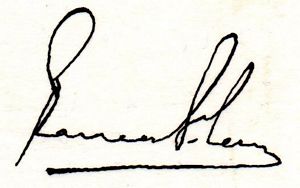 |
Consejero
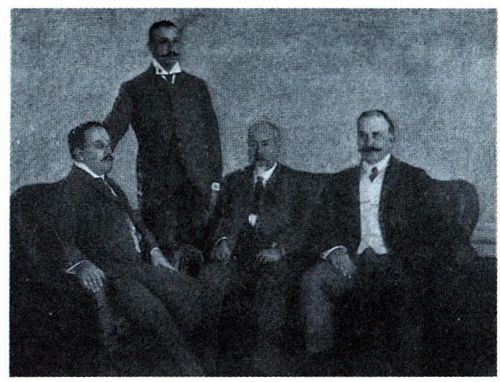
Consejeros of the Banco de Guanajuato: José Bustamente, Manuel Alcazar Jr., Enrique C. Creel and Manuel Antillón
(from El Porvenir, 1907)
|
Ramón Alcázar Ibargüengoitia was born in 1874 in Guanajuato, the son of Ramón Alcázar Castañeda and Luisa Ibargüengoitia Sánchez del Villar. He married Elena L. Corcuera y Paloma, daughter of Manuel L. Corcuera y Luna and Concepción Palomar y García Sancho. Alcázar began as a businessman, but later concentrated on dealing in mining shares in Guanajuato, Tamaulipas and ZacatecasThe Alcázar family shareholdings included Compañía Minera La Halagadora (Tamaulipas. 1880). Negociación Minera Angustias en Pozos (Pozos. 1886). Negociación Minera La Concordla (Guanajuato. 1886). Companla Minera El Refugio (Santa Rosa, 1890). Compañía Minera San Miguel de los Santos (Santa Rosa. 1890). Negociación Minera Angustias en Pozos (Pozos. 1890). Sociedad Minera Providencia (Pénjamo. 1891). Negociación Minera de San Carlos. S A. (Rayas. 1892). Cornpanla Minera La Esperanza (Guanajuato. 1891). Sociedad Minera San Gonzalo (Santa Rosa. 1892). Sociedad Minera Explotadora de San Pedro y San Pablo (Pozos. 1895). Compañía Apartadora de Meteles Predosos. S.A. (Guanajuato. 1895), Compañía Minera de San Rafael de Chinindaro y Anexas (La Fragua. 1898). Companla Explotodora de Mina Grande y El Carmen (Pozos. 1902). Negociación Minera La Concordia (Guanajuato. 1905), and Cornpanla Minera La Halagadora (Tamaulipas. 1903), and was part of the Compañía Guanajuatense Zacatecana, which controlled the Guanajuato and Zacatecas mints at the end of the 19th century. His son, ingeniero Ramón Alcázar, also invested in various mining companies. He dealt in cattle with Antonio N. Hernández of Monterrey, a director of the Banco de Nuevo León. As a comisionista, Alcázar made mortgage loans in the 1890s in the name of Stallforth, Alcázar y Compañía, of which he was manager from 1895. This firm invested in the Banco Mercantil Mexicano, of Mexico City, in 1881, before it was a shareholder in the Banco de Guanajuato. Ramón Alcázar was consejero propietario in 1900, presidente from 1902 to 1905, and on the consejo consultivo from 1906 to 1912 (with Fernando Pimentel y Fagoaga and Ernesto SchroederErnesto Schroeder was a member of Bahnsen y Compañía, comisario of the consejo de administración of the Banco de San Luis Potosí from its creation in 1899, member of the consejo de administración of the Banco de Morelos and member of the consejo de administración of the Banco Central Mexicano) and in 1913 (with André Guier and Ernesto Schroeder) As well as being a director of this bank he was also a director of the Banco del Estado de México and of the Banco Central Mexicano, vice-president of the Mortgage and Credit Foncier Bank of Mexico and Director of the Almacenes Generales de Depósito de México y Veracruz. He signed notes throughout the lifetime of the bank, from 1900 to 1914. |
  |
|
Jesús Fernández was a lawyer, who on various occasions was allied with Ramón Alcázar in mining investments, as the personal representative of Stallforth, Alcázar y Compañía. Jesús Fernández was consejero suplente in 1900 and from 1902 to 1907, and consejero propietario from 1908 to 1913. He signed notes from 1900 to 1914. |
 |
|
Federico Saavedra was tesorero of the local Cámara de Comercio in Guanajuato in 1897Semana Mercantil, 5 April 1897. Saavedra was consejero suplente in 1900 and comisario propietario in 1903 to 1905. He signed notes dated from 1900 to 1903. |
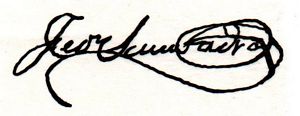 |
|
Carlos Chico Chico, the son of Manuel Chico Alegre and Ramona Chico y Ginori. belonged to a family with heavy involvement in mining and political ambitions. He married Guadalupe Ibargüengoitia. Apart from being a lawyer (abogado), Carlos Chico owned the agricultural properties of Coecillo and La Laborcita, which he rented out. He was also a moneylender. He was the eldest son and on his father’s death, bought out his brothers so that he could manage the estate. In May 1897 Carlos Chico, Joaquín Obregón González and Pablo Orozco formed a company called Orozco and Company to refine gold and silver at the hacienda de beneficio of Guadalupe de Pastita though the company was dissolved in 1901. Carlos Chico ventured into other mining companies as an owner or board member. His son, Carlos Chico Ibargüengoitia, in 1907 was manager and general proxy (apoderado general) of the bank, representing its branch in Zamora, Michoacán. Chico was consejero propietario in 1900, 1902 and 1903. He signed notes dated from 1900 to 1903. |
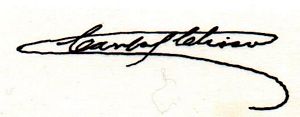 |
|
In 1892 Furness organized his concern into a stock company called the "Furness & Lewis Co.", but sold out in 1896 to Lewis, keeping the rights to Guanajuato and continuing business under the name of “Dwight Furness & Co.” and later as "The Dwight Furness Co." In 1900 he transferred his properties to the Dwight Furness Company, of which he was representative, president, manager and treasurer, with the aim of avoiding tax and finding investors in the United States. He was a shareholder in various mining companies in Guanajuato, Jalisco and Nayarit The Huautla Santa Ana Mining Company (1896-97), Sociedad Minera San Bartolo (La Fragua. 1891), Sociedad Minera La Perseguida (La Fragua. 1892), Companla Apartadora de Metales Preciosos. S.A. (Guanajuato. 1895), Compañía Minera La Diamita, S.A. (La Fragua, 1899), Negociacion Minera del Cedro y Anexas (Guanajuato. 1900), the Magistral. Nuevo Magistral, and Magistral y Anexas mines in Ameca. Jalisco, and mines in Etzallán (Jalisco) and Tepic (Nayarit) and an intermediate between the mining companies in Guanajuato and the smelters in Aguascalientes and Mexico City. Furness was also an investor in the Grocery Company, in 1906, selling groceries, liquor, and Mexican and foreign goods. At times he was a shareholder in the Compañía de Alumbrado Eléctrico y Fuerza Motriz de Linares, S.A. (organised in Nuevo León), and held the concession to build a railway line between Guanajuato, Marfil and Salamanca. He was also the U. S. consul in Guanajuato from November 1889 through the first years of the twentieth century. Furness was consejero propietario in 1900, and 1902 to 1905. He signed notes dated from 1900 to 1903. In 1902 Furness paid Ignacio Castellanos and his wife, Esther Tapia Ruíz, $200,000 in gold for 7,000 acres of land, including a section of Lake Chapala lakefront known as Rivera Castellanos. While Furness planned to farm most of the land, he recognised the enormous economic and tourist potential of Rivera Castellanos, “one of the finest scenic spots in Mexico” with “nearly three miles of lake and river front.” Furness began planning a modern “summer colony” and a large “commodious” lakefront hotel which would take full advantage of some nearby thermal springs. To finance the project, Furness incorporated the Lake Chapala Agricultural and Improvement Company in Phoenix, Arizona, in 1902. The company raised 600,000 dollars in capital and Furness began building an “American style” town and hotel. The Hotel Ribera, overlooking the lake, opened in 1906 and was fully functional by 1907. Soon after the outbreak of the Mexican Revolution in 1819, Furness decided to spend more time in the U.S. and sold the hotel to Enrique Langenscheidt Schwartz, a prominent and well-connected German businessman based in Guanajuato. |
 |
|
He was governor of Guanajuato from 4 June to 30 November 1911. Juan B. Castelazo was consejero suplente in 1900, and 1902 to 1905 and consejero propietario from 1906 to 1913. He signed notes from 1902 to 1911. |
 |
|
He was the son of General Francisco Florencio Antillón Moreno, who in January 1868 had recovered Guanajuato from the imperial forces and had served as governor from 17 September 1867 to 31 December 1876. Manuel Antillón was consejero propietario from 1906 to 1911. He signed various high value denominations ($50, $100, $500 and $1,000) dated 1909. |
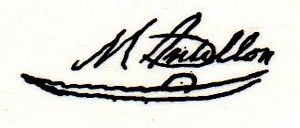 |
|
Mariano B. Taboada was consejero suplente in 1911 and 1912AGN, SC224, Antiguos Bancos de Emisión, caja 17, libro 55. He was also an alternate board member (vocal suplente} for the Banco de Querétaro in 1910Memoria de las Instituciones de Crédito correspondiente al año 1910 and 1914AGN, SC244 Antiguos Bancos de Emisión, caja 84, libro 238. He signed notes dated 1911 and 1912. |
|
|
Rodrigo Castelazo y Fuentes was consejero suplente in 1912 and 1913. He signed notes dated from 1912 to 1914. |
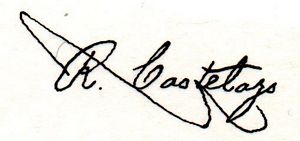 |
|
George W. Bryant came from Boston, Massachusetts, to Guanajuato in 1895 along with his partner, George W. McElhlney, of St. Charles, Missouri. Bryant was vice president and general manager of the Guanajuato Development Company, which installed modern equipment in several of the largest and most profitable mines in the district. Together with McElhlney, in 1904 he persuaded General Electric to install an electric power plant at a cost of $1,200,000 to supply cheap and permanent power to the mines and mills. The plant doubled its capacity in 1907, which made possible the building of more extraction mills and more extensive miningBaltimore Sun, 13 April 1908. Bryant was also president and general manager of the Mexican Milling and Transportation Company which built a mineral belt railroad. In 1907 it was proposed to sell the present street railway system of Guanajuato to the American interests represented by Bryant and McElhiney, who would rebuild the lines and install electric tractionSan Antonio Daily Express, 28 May 1907. Bryant was consejero suplente from 1907 to 1911 and consejero propietario in 1912 and 1913. He signed notes dated 1914. |
 |
|
Carlos de Escurdia was a consejero suplente in 1913. He signed $50 dates dated 1 June 1914. |
|
|
Federico G. Kunhardt was a banker and commission merchant, his firm being F. Kunhardt & Sons, which had been established in 1850. He was the managing owner of the Tramway company of Mexicaltzingo and also a tobacco planterThe Evening Telegram, Mexico City, Vol. I, Number 6, 7 July 1907. Kunhardt was consejero suplente from 1908 to 1913. |
 |
|
[if same person] In 1918 he was in charge of important work in connection with reclamation and surveying projects around Mexicali, Baja California, and on 25 September 1920, at the age of 54, was appointed by Provisional President Adolfo de la Huerta as governor of Baja California, becoming the third man to occupy the governor’s chair within sixty daysCalexico Chronicle, Vol. XVII, No. 43, 1 October 1920. |
 |
Interventor
|
Juan J. Farías was appointed interventor on 21 August 1900CEHM, Fondo CDLIV Colección José Y. Limantour, 2a. 1900, carpeta 8, legajo 17413. Juan Farías’s parents owned the Hacienda de Bocas, situated 40 kilometres north of San Luis Potosí, and in his youth he managed the hacienda on their behalf. However, the hacienda passed into the hands of Jesús García in 1900. Perhaps in anticipation in August 1897 Farias had the governor of San Luis Potosí, Carlos Díez Gutiérrez, ask Limantour to appoint him Interventor of the proposed Banco de San Luis PotosíCEHM, Fondo CDLIV Colección José Y. Limantour, 1a. 1883, carpeta 20, legajo 5222 and in September Farías had his parents’ friend, General Bernardo Reyes, governor of Nuevo León, write to Limantour with the same requestCEHM, Fondo CDLIV Colección José Y. Limantour, 1a. 1883, carpeta 43, legajo 11318. Farías was unsuccessful then, but he was appointed to this post a couple of years later. Farías signed notes dated 1900. |
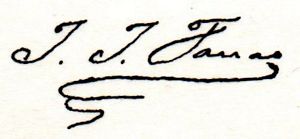 |
|
Enríquez Baz was interventor of the Banco de San Luis Potosí until 21 June 1901, when he moved to take up the position of interventor of the Banco de Guanajuatoinforme of interventor Baz, 31 August 1901 in Memorias de las Instituciones de Crédito correspondientes a los años 1900-1902. Baz signed notes dated from 1901 to 1911. Enrique Baz again took over the post of Interventor from Manuel Bauche Alcalde in November 1912AGN, SC224, Antiguos Bancos de Emisión, caja 8, libro 13. |
 |
|
At this time he must also have been appointed Interventor of the Banco de Guanajuato, as he signed the notes dated 3 May 1912. When Madero was assassinated Bauche Alcalde, together with his brother, travelled to the United States to acquire arms and planes for the rebels. He took part in some battles, but proclaimed himself more a journalist than a soldier, and after collaborating in El Demócrata Mexicano and El Intransigente, for a time edited Villa’s Vida Nueva. At this time he also wrote Villa’s memoirs, El general Francisco Villa. In May 1914 Carranza made him a coronel de caballería. In March 1915, he fought under Salvador Alvarado against Abel Ortiz Argumedo in Yucatán, but was captured and imprisoned for a few weeks. He then joined the Ejército de Oriente as Pablo González’ secretario particular, until November when Carranza appointed him consul general in Genoa, Italy, a post he did not take up. He left the army in February 1916 and spent time in Europe. In the 1920s he returned to Mexico and to journalism, working for El Demócrata. He died of a heart disease in 1929. |
|
|
Manuel Chico Ibargüengoitia was the son of Carlos Chico and brother of Carlos Chico Ibargüengoitia. Chico signed notes dated 1913 and 1914. |
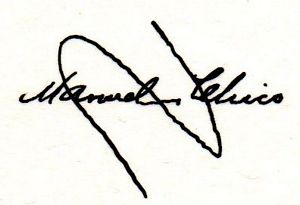 |


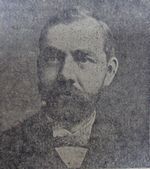
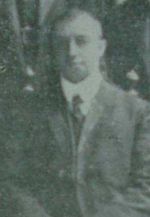
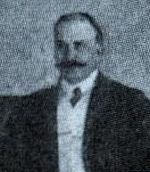 Manuel Antillón was a millionaire, with interests in mining
Manuel Antillón was a millionaire, with interests in mining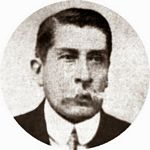
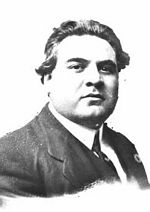 Manuel Bauche Alcalde was born in Piedras Negras, Coahuila, in June 1881. Between 1897 and 1900 he studied at the Colegio Militar, but then espoused journalism, as a theatre and music critic and the author of political articles under the pseudonym ‘Pedro Ponce’. He supported Madero and when the latter became president, on 4 February 1912 Bauche Alcalde was appointed editor of Nueva Era, the newspaper most loyal to the government, though he only lasted a couple of months.
Manuel Bauche Alcalde was born in Piedras Negras, Coahuila, in June 1881. Between 1897 and 1900 he studied at the Colegio Militar, but then espoused journalism, as a theatre and music critic and the author of political articles under the pseudonym ‘Pedro Ponce’. He supported Madero and when the latter became president, on 4 February 1912 Bauche Alcalde was appointed editor of Nueva Era, the newspaper most loyal to the government, though he only lasted a couple of months.